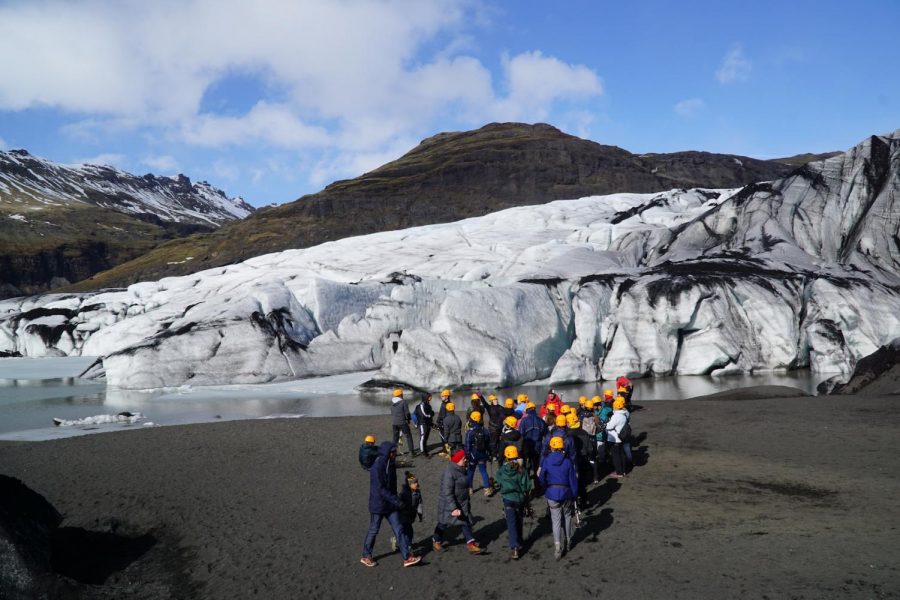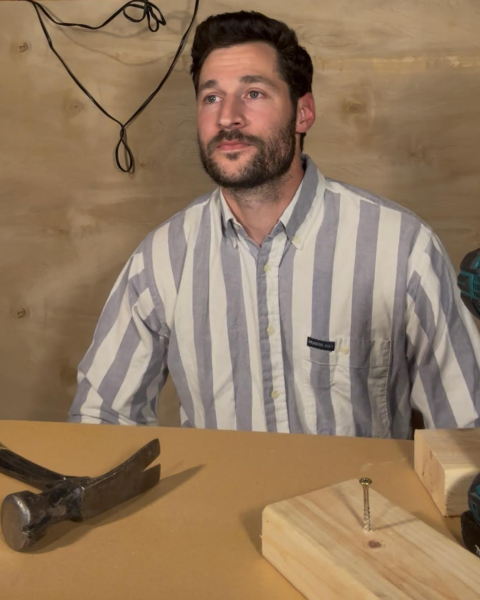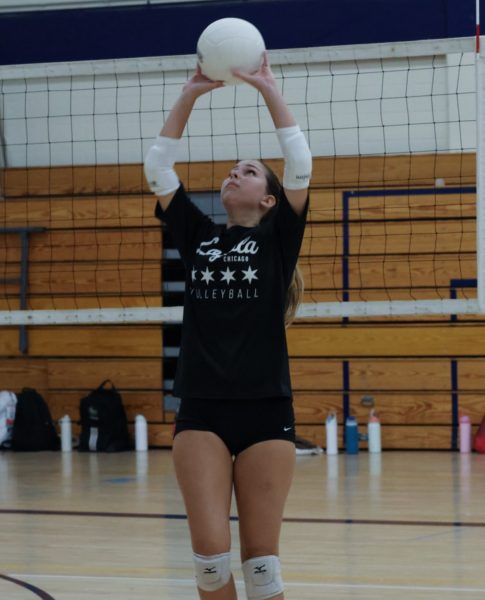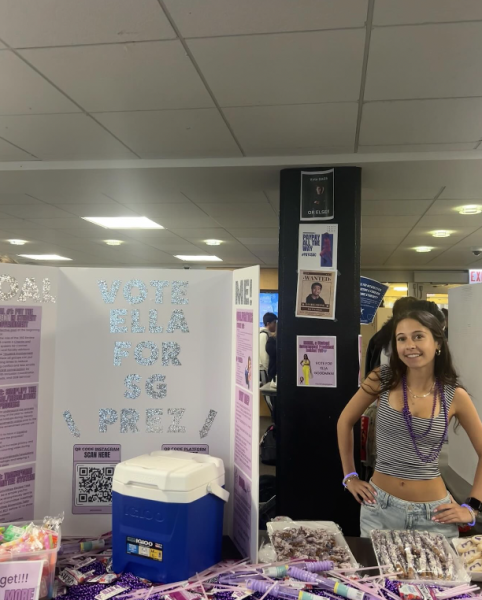Ice Breakers
Upper School Spring Break Trip to Iceland
Photo credit: Isaac Warshaw
Members of the trip gear up at a glacial outlet.
In the early hours of the morning on Tuesday, April 9, twenty-nine students and three faculty advisors hiked a rocky glacier in thirty-degree weather. Bundled up and shivering, the group watched in awe as the darkness steadily gave way to a yellow and pink sunrise. While their peers lay on beaches in California or toured colleges on the East Coast, the students looked out onto the golden landscape of Reykjavik, Iceland.
Upper School Science Teachers and Trip Advisers Xiao Zhang and Bridgit Lesinski met the travel company Worldstrides at a science convention and planned their trip according to their interest in biology and science. The company planned the itinerary, while the advisers had input on how students would respond to the science involved.
The twenty-nine student group left Chicago from O’Hare on Saturday for a six-hour direct flight through Iceland Air and returned late Thursday. They stayed in a hotel in Reykjavik the first night and moved to another hotel in south-west Iceland for the remainder of the trip.
Led by their Icelandic tour guide, Gugga G, the group made their way across museums, hot spots, geysers, and the rocky landscape of Iceland in five days. They visited Thingvellir National Park UNESCO, the site of Iceland’s parliament from the 10th to 18th centuries and the site where the Vikings first met when they arrived in 1847 to look for land as farmers. The Instagram-popular beach, Reynisfjara, was one of their next stops, followed by the Hellisheioi Geothermal Power Plant, which produces Iceland’s carbon neutral energy. Later, the group saw waterfalls at Aurora Borealis and hiked up the Solheimajokull Glacier, which has suffered severely from global warming: the snow melts more than 60 feet per year.
Junior Celeste Gerbaulet-Vanasse signed up for the trip after learning about the day-to-day schedule. “I’ve never been to Iceland and the activities, like hiking up a glacier and going to the Blue Lagoon, sounded really cool,” Gerbaulet-Vanasse said. “My parents thought it would be a great opportunity for me to take advantage of what Parker has to offer.”
On the first day, the group traveled to a Viking museum where they learned about Iceland’s history and how the country was named, while the Lava Center focused on volcanoes and glaciers to teach them about how Iceland was formed.
According to Lesinski, the volcanic museum had the biggest impression on the students. “The museums are amazing and really interactive and modern,” Lesinski said. “We saw a cool video of the volcanoes, which only erupt every four to five years.”
One particular site stood out to Gerbaulet-Vanasse. “There was a fence that had a bunch of bras hanging from it because someone had put one there months ago in support of breast cancer, and everyone followed,” Gerbaulet-Vanasse said. “We found a cat cafe where they have cats roaming around, and tried a lot of coffee shops because the coffee was so amazing.”
As a serious horseback rider at home, Gerbaulet-Vanasse was particularly interested in the farm they visited. There, the group interacted with Icelandic horses, one of the purest horse breeds in the world. Their isolation allows them to stay untouched by cross-contamination.
“The farm only has the Icelandic breed, so if you take a horse out of the country, they can’t come back, and if a rider leaves the country, they cannot come back and ride the horse,” Gerbaulet-Vanasse said. “The owner was going to an international competition in Germany, so she could either bring her best horse and sell it for a lot of money, or keep her best horse and bring a different one to sell for less.”
Gerbaulet-Vanasse’s favorite part of the trip was hiking up the glacier. “There are no glaciers in Chicago, and the view was incredible,” Gerbaulet-Vanasse said. “Whenever you’re going on a hike, there’s a sense of accomplishment when you get to the top.”
Junior Kushmir Onisemoh was particularly interested in Iceland’s use of geothermal energy. According to the National Energy Authority of Iceland, geothermal sources account for 66% of Iceland’s primary energy use, and the buildings are primarily heated through the geothermal source.
As with Gerbaulet-Vanasse, Onisemoh’s favorite parts of the trip were climbing the glacier and the horse farm. “You only see glaciers in movies about nature, and you almost never get to be on one,” Onisemoh said. “At the farm, the lady riding the horse did an amazing trick where she rode the horse with a beer, and even while the horse was trotting and she dismounted, she never spilled any of it.”
In the morning, the group ate a classic Icelandic breakfast of cold cuts and coffee, while fish and chips dominated their lunches and dinners. According to Junior Isaac Warshaw, who loved the Icelandic baked goods, the food is local, organic, and expensive. The group slurped lamb stew and munched on Skyr, a traditional Viking food of fresh sour milk cheese that is consumed like yogurt.
Junior James Cuevas, Gerbaulet-Vanasse, and Onisemoh agree that the faculty advisors could not have done a better job leading the trip.
“They were so fun and responsible, but also chill, so we would have free time around the city,” Gerbaulet-Vanasse said. “They were the best I could’ve picked to go on the trip.”
According to Cuevas, the itinerary was extremely packed with activities and museums, which made retaining information from the tour guide difficult. “Iceland is so spread out, so we spent a lot of the time traveling,” Cuevas said. “Our tour guide was so informative, but she was telling us long passages of information packed into a small amount of time.”
Lesinski was especially struck by the differences between Iceland and Chicago culture. “We learned about the culture, immigration, language, Vikings, history, and food,” Lesinski said. “Five minutes outside the capital is very rural, and there are mountains and glaciers, so each direction you look, there is something to see.”











